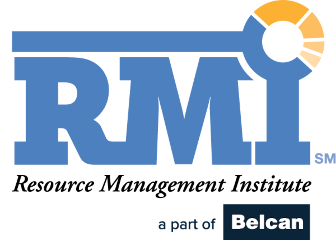The professional services industry is undergoing a radical and permanent transformation, with people demonstrating they want more agency over their workloads and professional development and taking life-changing steps to realize their goals.
As seen in new research from Kantata, these changes have had sweeping impacts on the way the professional services workforce operates, as well as on the day-to-day realities of the business leaders who are trying to retain and hire the best talent in the industry but are struggling to keep up with the shifting expectations of their people.
Kantata commissioned Atomik Research to survey 1,502 services industry professionals – 502 senior leaders, 500 full-time employees, and 500 independent contractors/freelancers – for our new in-depth research report, “The Changing Dynamics of the Modern Workforce – An In-Depth Look at the Professional Services Industry.” These findings paint a picture of frustration among leaders, full-time employees, and contractors, who don’t always see eye-to-eye; but also reveal several steps leaders can take to reduce churn, strengthen client relationships, and accelerate growth.
Insights Into the Shifting World of Professional Services Work
The Great Resignation phenomenon has received a great deal of attention from media, analysts, and business leaders over the last couple of years. But among services industry professionals, the story isn’t one of people leaving their full-time jobs to travel the world or pursue their passion projects. Instead, people are reshaping their roles within the professional services industry, following paths paved by the embrace of remote work and the new technologies that enable it – for some that means working full-time for a new employer, but for many it means embracing independence and entering the contract workforce.
Here are a few of the major insights Kantata found in our research that we believe are reshaping the business world and the way people are structuring both their careers and their companies:
- 76% of independent contractors we surveyed say they were full-time employees just one year ago.
- 43% of full-time employees say they have considered becoming an independent contractor or freelancer.
- 61% of senior leadership say they spend at least a third of their time each day trying to solve employee turnover issues.
- 53% of senior leadership admit they have a problem hiring full-time employees.
- 32% of surveyed full-time employees (FTEs) claim they are not sure, or they do not believe, senior leadership prioritizes employees’ professional growth.
- Only 51% of independent contractors say they would rate their company’s onboarding process as effective, a sharp contrast with business leaders and FTEs (83% and 77% respectively).
These insights from Kantata’s research highlight how enticing the allure of a career in the contractor workforce is becoming, and the impact that is having on senior leaders, who need to commit to proactive strategies that ensure their businesses are able to meet the demands of today’s flexible workforce.
Giving Employees and Contractors More Agency
A business’s workforce isn’t just made up of resources who will fill open roles on projects and generate revenue. These are people, each with their own goals, preferences, career aspirations, and learning objectives. Whether they are employees or contractors, every person wants to feel like they are the author of their career trajectory, and when people feel like they lack that agency, they are much more likely to seek opportunities elsewhere.
Both FTEs and independent contractors say they would feel more loyal to companies that invest in their professional development goals by paying for development opportunities like certifications, continuing education, and masterclasses. Building this loyalty will be a key factor in reducing the impact of churn, ensuring business leaders can spend less of their day struggling with employee turnover and hiring processes.
Structured professional development programs are an essential component of this – more than 9 out of 10 business leaders and FTEs agree this is true – but don’t discount the value of more informal ways of granting agency to talent, such as providing them a way to “raise their hand” for work that interests them. Publishing open roles to relevant employees and contractors has many benefits – it makes them feel like they have more control over the work they’re doing, it increases opportunities for on-the-job training for people looking to leverage projects as a means of skills acquisition, and it helps resource managers identify resources who would be a great fit for a role who might otherwise slip through the cracks.
Understanding The Changing Dynamics of the Modern Workforce
In order to retain and grow the valued talent network that drives success at your business, you need to understand the workforce trends that are reshaping the professional services industry. To learn more about evolving workforce trends and see Kantata’s other recommendations for building a modern workforce where internal and external talent are working in lockstep, check out our full study, “The Changing Dynamics of the Modern Workforce – An In-Depth Look at the Professional Services Industry,” which presents the complete findings of Kantata’s research.

Charles Gustine is Brand Evangelist at Kantata. He is a product marketing specialist with a learning and development background, applying his experience to help customers find value in the SaaS software they purchase. After eight years of developing training solutions at SumTotal and Kantata, he is applying an educator’s sensibility to product and brand marketing. Charles leverages Kantata’s understanding of the challenges of professional services organizations to create market-leading thought leadership content.




